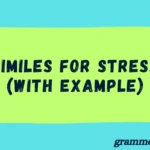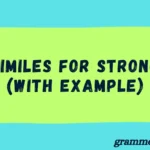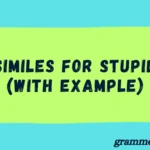Have you ever wondered what the past tense of “meet” is? Whether you’re a student, a teacher, or just brushing up on your English grammar, this is one of those verbs that can cause a little confusion. The good news? It’s actually pretty simple—“met” is the correct past tense of “meet.”
But don’t stop there. In this guide, we’ll break down everything from the verb forms of “meet” to why it’s considered an irregular verb. You’ll see real-life examples, get quick grammar tips, and learn how to use “met” in a sentence confidently—whether you’re writing an essay, giving a lesson, or chatting with friends. Let’s make grammar less boring and a bit more useful for your everyday English.
What Does “Meet” Actually Mean?
At its core, meet means to come into the presence or company of someone, usually for the first time or at a scheduled moment. You might meet a new friend at school, meet your teacher after class, or even meet a challenge head-on.
But meet isn’t only about people. It can also mean encountering ideas, problems, or experiences. For example, a student might say, “I met a tough problem on the math test,” meaning they faced or encountered it.
This flexibility makes meet a common verb in everyday American English, especially in educational and professional settings.
The Correct Past Tense of Meet Is “Met”
English can be tricky, but the past tense of meet is simple: it’s always met. You say met to talk about something that happened in the past. For example:
- I met my teacher yesterday.
- We met for coffee last week.
There’s no such word as “meeted” — this is a common mistake, especially among new learners. Remember, meet → met is the correct verb change.
Here’s a quick verb conjugation table to keep things clear:
| Tense | Verb Form |
| Base form | meet |
| Past tense | met |
| Past participle | met |
| Present participle | meeting |
| 3rd person present | meets |
How to Pronounce “Met” (vs. Meet)
Knowing how to say met correctly helps you sound natural. Here’s a quick guide:
- Meet is pronounced /miːt/, with a long “ee” sound, like in “see” or “tree.”
- Met is pronounced /mɛt/, with a short “e” sound, like in “bed” or “set.”
In everyday American English, this difference is clear and important. For example, “I will meet you” sounds different from “I met you yesterday.”
Examples of “Meet” vs. “Met” in Real Sentences
Here are some examples you can relate to from school, work, and social life:
- Present tense:
- I meet my classmates every Monday.
- She meets with her study group after school.
- I meet my classmates every Monday.
- Past tense:
- I met my professor after class yesterday.
- They met at the library last week.
- I met my professor after class yesterday.
Using “Meet” in the Present Tense
When you use meet in the present tense, you usually say:
- I/You/We/They meet
- He/She/It meets
It describes things happening regularly or currently:
- Teachers meet students during office hours.
- Students meet deadlines every semester.
Here are 5 more examples:
- I meet new people at the club.
- She meets her tutor every Friday.
- We meet in the auditorium for assemblies.
- They meet to discuss the project.
- He meets challenges with confidence.
Using “Met” in the Past Tense
Use met when talking about past events:
- I met my best friend in middle school.
- She met the guest speaker yesterday.
Here are 5 real-life examples:
- We met at the community center last summer.
- They met before the big game.
- I met with my advisor two days ago.
- He met the requirements for the scholarship.
- The students met to plan the fundraiser.
Common Mistakes to Avoid with “Meet” and “Met”
Even fluent English speakers sometimes slip up with these verbs. Here are common pitfalls to watch out for:
- Avoid “meeted.” It’s incorrect in all cases.
- Don’t confuse the past participle with the past tense; for meet, both are met.
- Be careful not to mix tenses: “Yesterday, I meet my teacher” is wrong; it should be “Yesterday, I met my teacher.”
Visual Verb Timeline: Meet → Met
Visual learners find it easier to remember verbs when they see the progression. Here’s a simple timeline:
Present: I meet → Past: I met → Past Participle: I have met
This shows how the verb changes over time, helping you understand and recall the forms when writing or speaking.
Synonyms for “Meet” and “Met” (with Contexts)
Sometimes, you want to switch up your vocabulary. Here are synonyms with examples to help you sound more natural and varied:
Present Tense Synonyms of “Meet”
| Synonym | Example | Context |
| Encounter | I encounter new ideas daily. | Educational |
| Greet | She greets all her students. | Formal situations |
| Come across | You come across many challenges. | Casual |
Past Tense Synonyms of “Met”
| Synonym | Example | Context |
| Ran into | I ran into my coach yesterday. | Casual |
| Bumped into | She bumped into an old friend. | Informal |
| Came across | We came across a strange fact. | Neutral |
These alternatives spice up your conversations and writing.
“Met” in Idioms and Everyday Expressions
English is full of colorful phrases with meet or met. Here are some common idioms you’ll hear in classrooms, workplaces, and daily chats:
- Make ends meet: to manage financially.
“Many students work part-time jobs to make ends meet.” - Meet halfway: to compromise.
“Teachers and students often meet halfway to solve issues.” - Meet your match: to encounter someone equal in skill.
“He finally met his match in the debate competition.”
Understanding these idioms adds flair to your language skills.
Origin and Etymology of “Meet”
The word meet comes from Old English mētan, meaning “to come upon” or “to encounter.” Over centuries, it evolved but kept the core idea of encountering someone or something. The verb appears frequently in classic English literature, such as Shakespeare’s plays, showing its long-standing importance.
How Native Speakers Use “Met” Naturally
In everyday American English, native speakers often use met casually to recount past meetings:
- “I met her at the coffee shop.”
- “We met up to study last weekend.”
Formal settings may use more precise terms but met remains a go-to verb for past meetings.
Teachers, for example, might say:
“I met with the curriculum team yesterday.”
Students might say:
“I met my tutor to review the assignment.”
Quick Recap: When to Use Meet vs. Met
To summarize:
- Use meet for present or future actions.
- Use met for past events and experiences.
- Never say meeted—it’s incorrect.
- Use synonyms to avoid repetition.
- Remember pronunciation differences (/miːt/ vs. /mɛt/).
Practice Makes Perfect: Exercises with “Meet” and “Met”
Try these to test your understanding:
- Fill in the blank:
Yesterday, I ______ my new teacher.
(Answer: met) - Correct the sentence:
Tomorrow, we met at the library.
(Correction: Tomorrow, we meet at the library.) - Match present and past:
- Meet → _____
- Greet → _____
- Meet → _____
(Answer: Met, Greeted)
Conclusion:
So now you know — the past tense of “meet” is “met”. Simple, right? But it’s more than just memorizing one word. Understanding how irregular verbs like “meet” work helps you speak and write better English every day. Whether you’re a student working on grammar homework, a teacher planning a lesson, or just someone who wants to communicate clearly, knowing the right verb forms makes a big difference.
Keep practicing, try using “met” in your own sentences, and don’t be afraid to make mistakes. That’s how real learning happens.
Frequently Asked Questions
1. What is the past tense of “meet”?
The past tense of “meet” is “met.” It’s an irregular verb, so it doesn’t follow the usual -ed pattern.
2. What is the past participle of “meet”?
The past participle of “meet” is also “met.” So, V2 = met and V3 = met.
3. Is “met” a regular or irregular verb?
“Met” is the past tense of the irregular verb “meet.” That means it doesn’t add -ed like regular verbs.
4. Can you give an example of “met” in a sentence?
Sure! Example: I met my best friend in high school.
5. Why is it important to know the verb forms like V1, V2, and V3?
Knowing verb forms helps you use correct grammar in writing and speaking. It’s especially useful for students, ESL learners, and teachers.

Mia Rose is the grammar enthusiast and content creator behind GrammerHome.com, where she brings clarity to the often-confusing world of English grammar. With a strong background in language education and a passion for helping others, Mia’s writing style blends simplicity, depth, and a touch of charm.




